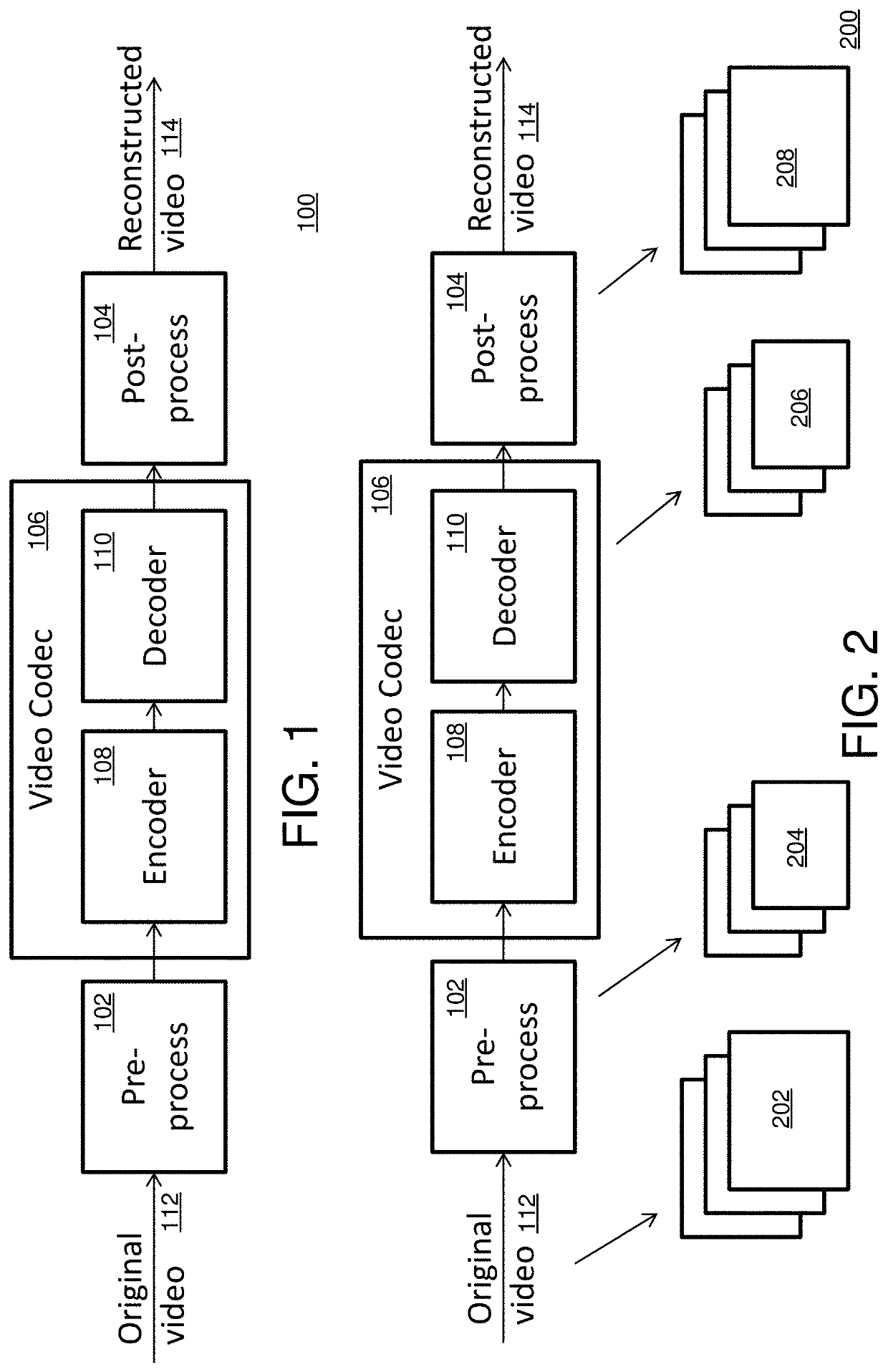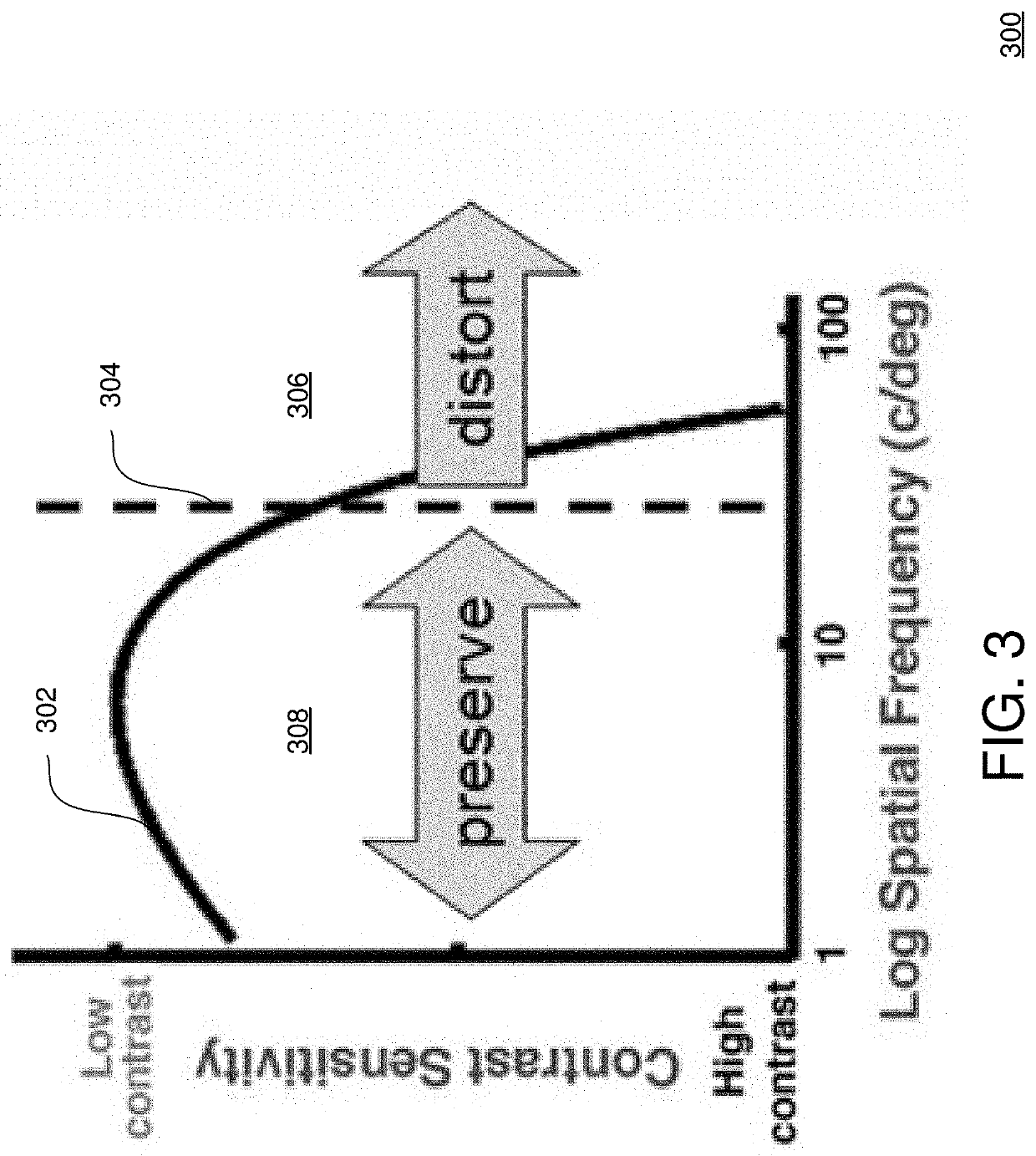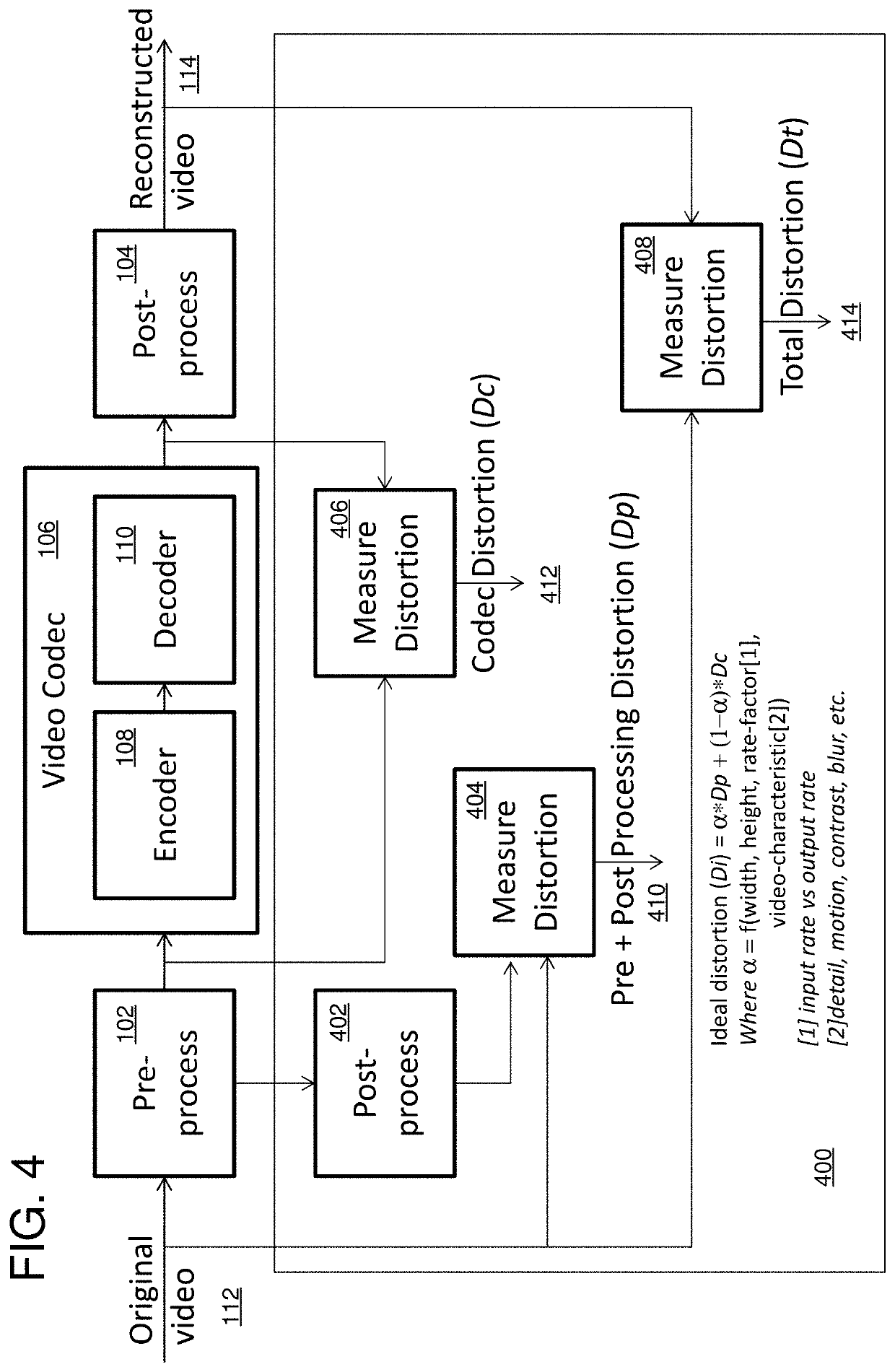Method and system for real-time content-adaptive transcoding of video content on mobile devices to save network bandwidth during video sharing
a mobile device and video content technology, applied in the field of methods, can solve the problems of insurmountable limitations of video payload delivery over http, the rate-distortion performance of video coding and decoding, and the like, and achieve the effects of improving the rate-distortion performance, facilitating transcoding and editing of multimedia content, and tightly bounding the output rang
- Summary
- Abstract
- Description
- Claims
- Application Information
AI Technical Summary
Benefits of technology
Problems solved by technology
Method used
Image
Examples
Embodiment Construction
[0022]The present invention includes recognition that a video codec (COmpression-DECompression) algorithm can be used to reduce the amount of data employed to represent a given video sequence (e.g., “video”) by one of two fundamental means, including “lossless” coding techniques and “lossy” coding techniques. Lossless coding techniques allow for perfect reconstruction of the video upon decompression, but provide very limited reductions in the data employed to represent the video. Lossy coding techniques intentionally introduce distortion making a tradeoff between fidelity (e.g., trueness to the original video according to some metric) and data requirements for representation.
[0023]Such a tradeoff is made according to human-vision perceptual models, which attempt to keep distortion below the threshold of perception. Compared to lossless coding techniques, lossy coding techniques can realize very large reductions in the data employed to represent the video. Lossy video codecs in commo...
PUM
 Login to View More
Login to View More Abstract
Description
Claims
Application Information
 Login to View More
Login to View More - R&D
- Intellectual Property
- Life Sciences
- Materials
- Tech Scout
- Unparalleled Data Quality
- Higher Quality Content
- 60% Fewer Hallucinations
Browse by: Latest US Patents, China's latest patents, Technical Efficacy Thesaurus, Application Domain, Technology Topic, Popular Technical Reports.
© 2025 PatSnap. All rights reserved.Legal|Privacy policy|Modern Slavery Act Transparency Statement|Sitemap|About US| Contact US: help@patsnap.com



